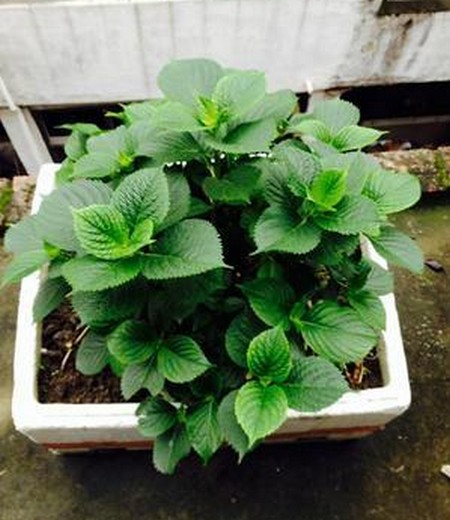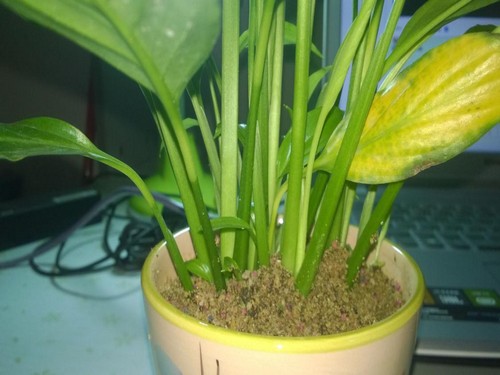Why don't hydrangeas bloom? The reason why hydrangea does not blossom
"Hydrangea" flower, such as its name, unforgettable at first sight, is a very specific and vivid variety in a small number of flowers. The flowers are like a golden ball, and the purple purples of one ball are seen as a symbol of happiness, so they use ribbons to form hydrangeas when they get married.

Hydrangea, also known as Yin Hydrangea and Ziyang Flower, is a semi-evergreen or deciduous shrub with large opposite leaves, glossy leaves, colorful hydrangea flowers and changeable colors, which can change with the acidity and basicity of the soil. it is as white as snow at the beginning and gradually turns to light blue and light red in the later stage. each inflorescence can blossom for 2 months, which is suitable for both courtyard cultivation and family potted plants. However, it is often difficult to blossom if it is not properly maintained at home, the main reasons are as follows:
The main results are as follows: 1. The light is too weak: due to the limitation of conditions in family cultivation, it is easy to cause the branches and leaves to grow and grow poorly. When the flower bud differentiates, the nutrition is insufficient, so that the flower bud can not differentiate normally.
2. The sunshine time is too long: Hydrangea is a short-day flower, and the sunshine hours should not be more than 10 hours during flower bud differentiation. If family cultivation is kept indoors, long hours of indoor light at night will affect flower bud differentiation.
3. Room temperature is too high in winter: Hydrangea flower bud differentiation needs a lower temperature, which should be controlled at 5: 10 ℃ for about one and a half months. If family cultivation is kept in a warmer room in winter, the flower bud can not differentiate normally.
4. Excessive nitrogen fertilizer: Hydrangea grows vigorously and has a great demand for fertilizer. During the period from post-anthesis to flower bud differentiation, nitrogen fertilizer is the main fertilizer, and phosphorus and potassium fertilizer is the main fertilizer in the flower bud differentiation stage. If excessive nitrogen fertilizer is applied during the short-day flower bud differentiation period in autumn and winter, the vegetative growth is exuberant, reproductive growth is inhibited, and flower buds cannot be formed, so it is difficult to bloom in the early summer of the following year.
5. Uncomfortable pruning period: the normal flowering period of hydrangea is from June to July. Generally, the flower branches should be cut off after the flowering period, or they can be re-cut. If the branches are re-cut in early spring, it is difficult to form effective flower branches from June to August, resulting in reduced flowering or no flowering.
If both old and new branches do not blossom, there are four main reasons that need to be explored to find countermeasures:
1, the sun is not enough, too many shadows are enough to affect the flowering, move the hydrangea to a sunny place, but to avoid direct exposure, there are also shade-tolerant varieties, such as "limelight" and "scorching ashes".
2. the bud is damaged, the weather is abnormal, and the intense warmth in early spring will also damage the germination of potential buds.
3. Balanced fertilizer and excessive nitrogen fertilizer will lead to excess vegetative growth and inhibit flower bud differentiation.
4. the misunderstanding of pruning, too late or too low, pruning without leaving bud points will destroy its nutrition and potential buds.
Time: 2019-06-01 Click:
- Prev

What if the leaves of white palm turn yellow? What if the leaves of white palm droop?
With the development of modern life, many people are willing to keep a pot of green plants at home. White palm is a common green plant, but it is easy for the leaves to turn yellow when planted at home. There are many reasons for the yellowing of white palm, and the main reason is caused by stagnant water. What are the specific reasons for the yellowing of white palm leaves?
- Next

How to grow purse flowers? Culture methods of lotus flower
The lotus bag originally means Latin small flower shoes. When it was first born in the Andes of South America, the local villagers did not like it and thought it was a cheering bag that did not want to communicate with others. Most adults disdained it except that the children picked it from the wild to play.
Related
- Fuxing push coffee new agricultural production and marketing class: lack of small-scale processing plants
- Jujube rice field leisure farm deep ploughing Yilan for five years to create a space for organic food and play
- Nongyu Farm-A trial of organic papaya for brave women with advanced technology
- Four points for attention in the prevention and control of diseases and insect pests of edible fungi
- How to add nutrient solution to Edible Fungi
- Is there any good way to control edible fungus mites?
- Open Inoculation Technology of Edible Fungi
- Is there any clever way to use fertilizer for edible fungus in winter?
- What agents are used to kill the pathogens of edible fungi in the mushroom shed?
- Rapid drying of Edible Fungi

